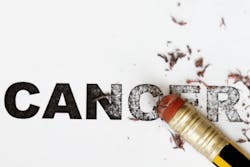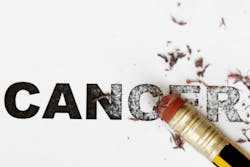Seriously, how meticulously do you check for oral cancer?
By Iman Sadri, DDS
Too often, as practitioners, the priority becomes about the phases of treatment planning. We look at the patient's chart and ask, "How is the perio? What about caries control? Do any restorations need to be replaced? Are there edentulous areas that could benefit from implant placement?"
But do we tell ourselves often enough that each patient may have the early signs of oral cancer, even if they do not smoke or drink regularly? Are we meticulously checking for oral cancer as we are for incipient caries or abfractions? Are we looking for early potentially precancerous lesions as diligently as we chart existing treatment?
If the answer is a resounding "No," then we need to take a step back and reevaluate our daily clinical priorities. Sure, we do not want to overwhelm patients by giving them a laundry list of items that we check for and are concerned about.
Too often, a four-page treatment plan is a result of telling patients what they need all at once. We avoid this because we want to focus on the priorities or the chief complaint of patients. But isn't potentially saving their lives the most important priority? Isn't this the onus when checking for blood pressure prior to starting the treatment?
Many times it's not about preventing patients from potentially fainting in the dental chair, but about educating them about the deleterious effects of being hypertensive. Dentistry is evolving. Providers are taking advantage of the adage, "The mouth is the window to the body," by treating pathologies other than those related to teeth and gums.
As an example, snoring and oral appliance therapy to combat obstructive sleep apnea is becoming more prevalent. The first step with this route is having the patient complete an Epworth Sleepiness Scale form. After evaluating the results, do we become alarmed when a patient answers, "Eight out of 10" when asked if they fall asleep at the wheel while driving?
Of course we do. Some practitioners may even schedule the patient for a sleep study immediately that week.
But how urgently are we checking for oral cancer? Clearly, not urgently enough when there are 42,000 new cases diagnosed each year. The easy rationale is that it is difficult to detect because of the minute size of hidden lesions or because the lesions are asymptomatic.
This rationale becomes a languorous excuse when there are thousands of lives lost annually because oral cancer was not detected early enough. These are individuals who are nonsmokers and under the age of 50 who succumb to oral cancer by the thousands, each year.
A priority needs to be made to use magnification when doing intraoral and extraoral exams. It's not just the soft tissue in the mouth. It's the hard palate, keratinized tissue in the posterior of the oropharynx, and areas of edema around the tonsils. Externally, it's the angle of the lip and any areas skin cancer could be missed by a dermatologist because of its proximity to the mouth.
Many times, primary care physicians may leave it up to the dentist. But are they really leaving it up to us? Are we doing enough to just diagnose and treat what we can bill out routinely or are we just going through the motions? It's time to be as meticulous about oral cancer as we are about the margins of our crowns and the collections of our claims.
Iman Sadri, DDS, is a 2008 graduate of the NYU College of Dentistry. He writes regular dental articles and maintains a private practice in Orange County, Calif. He can be reached at [email protected].
Past DE Articles


